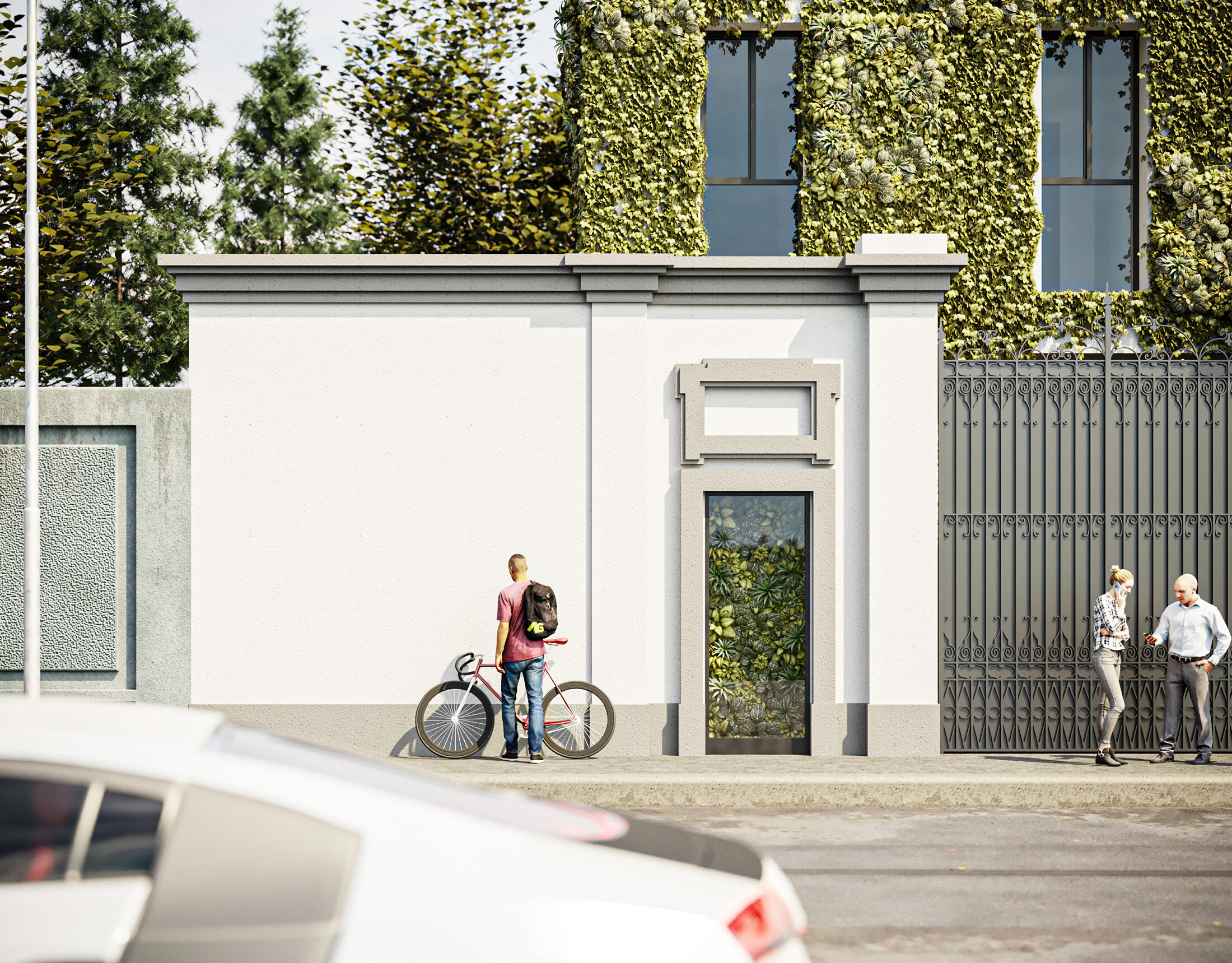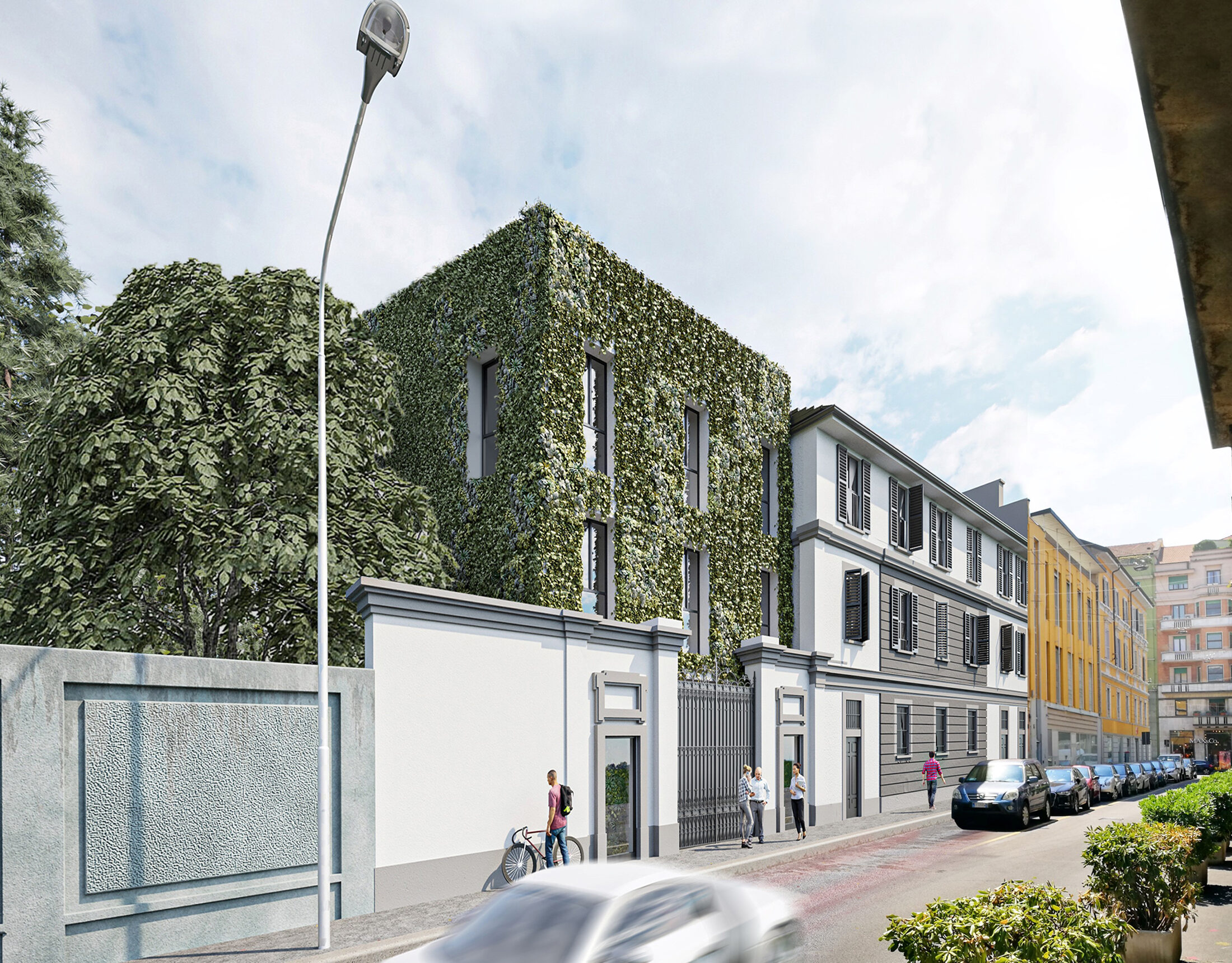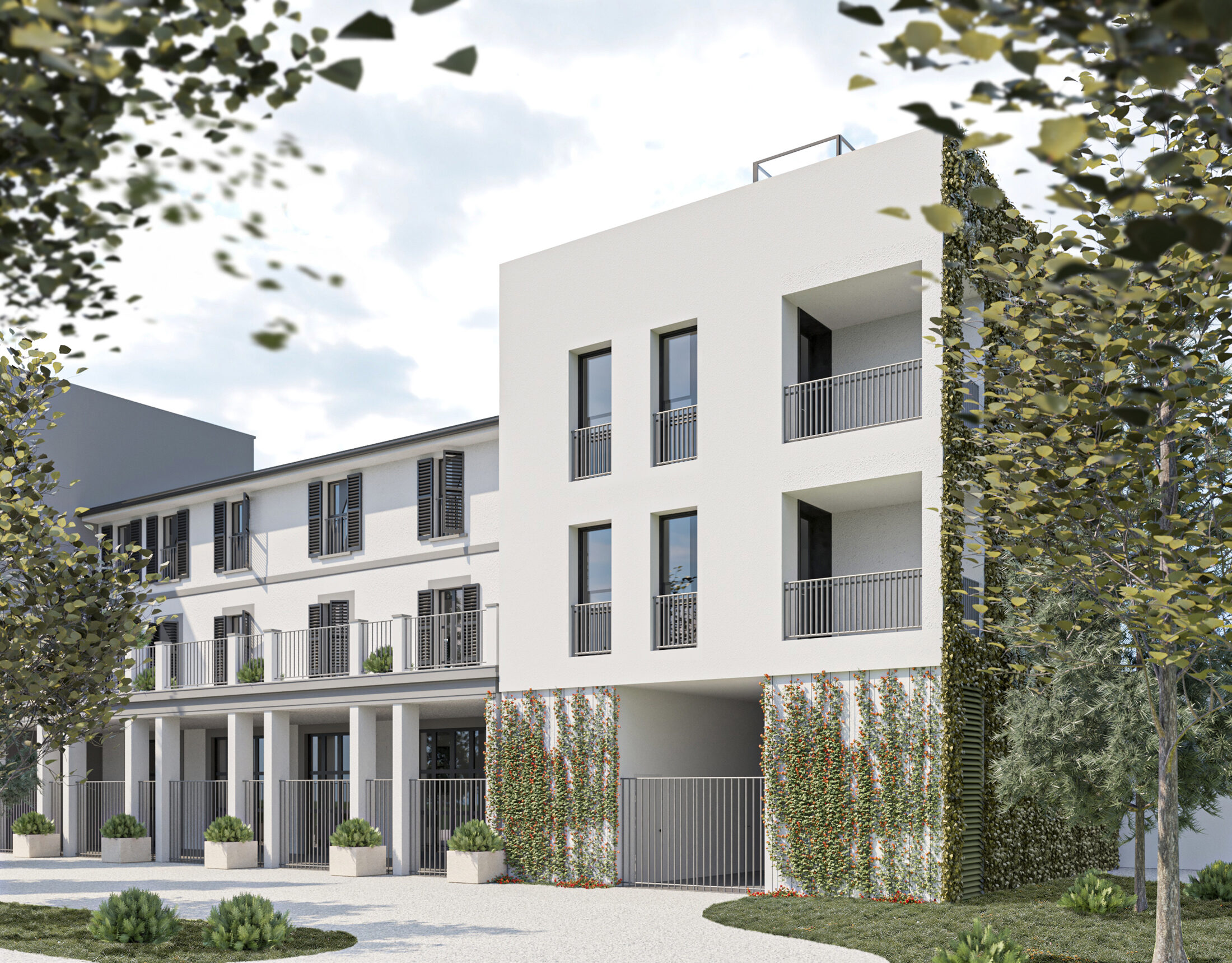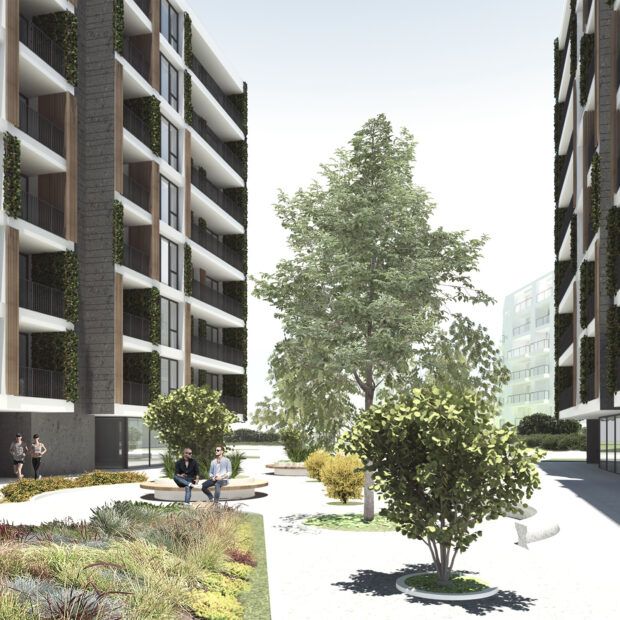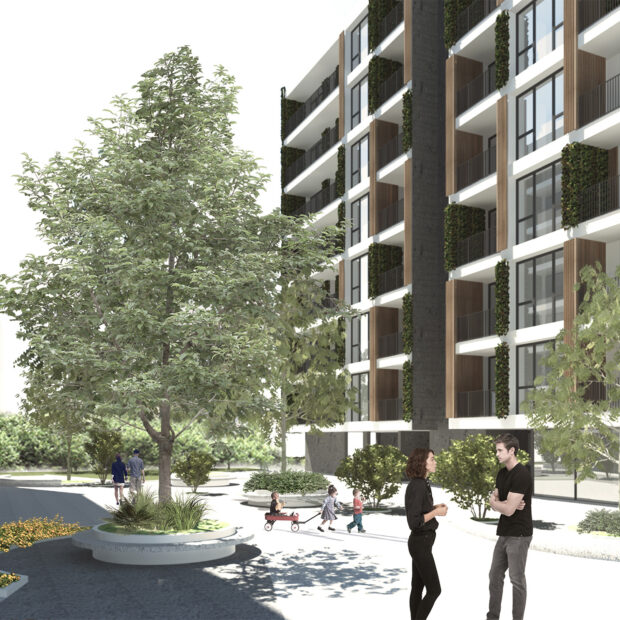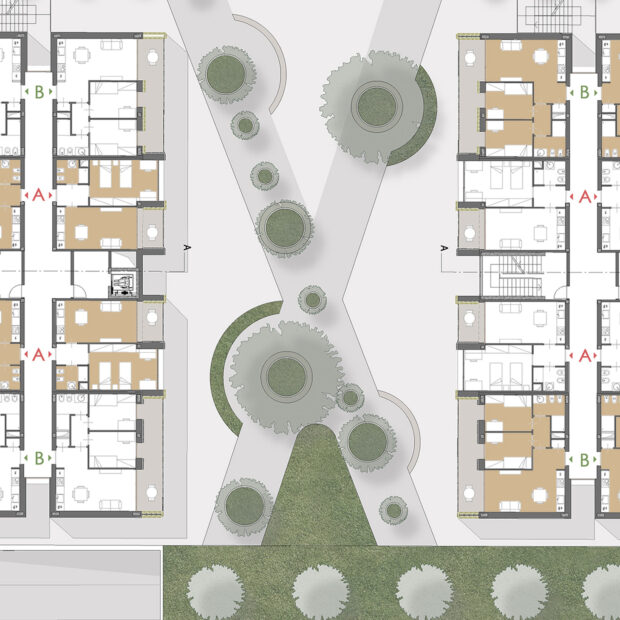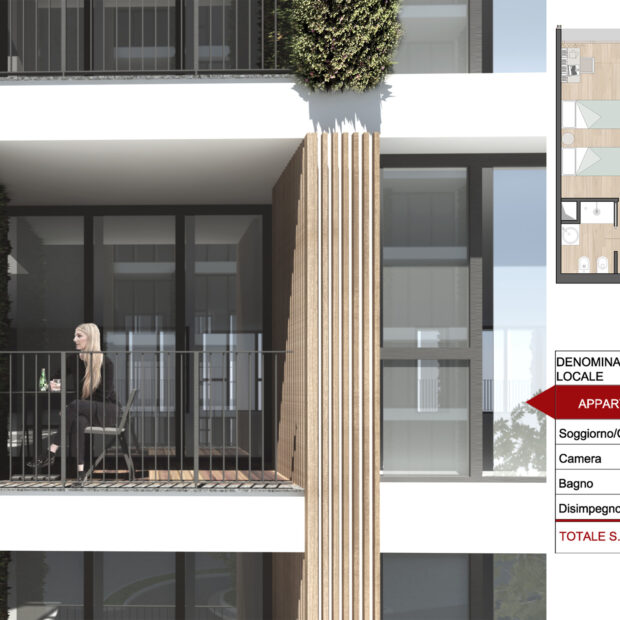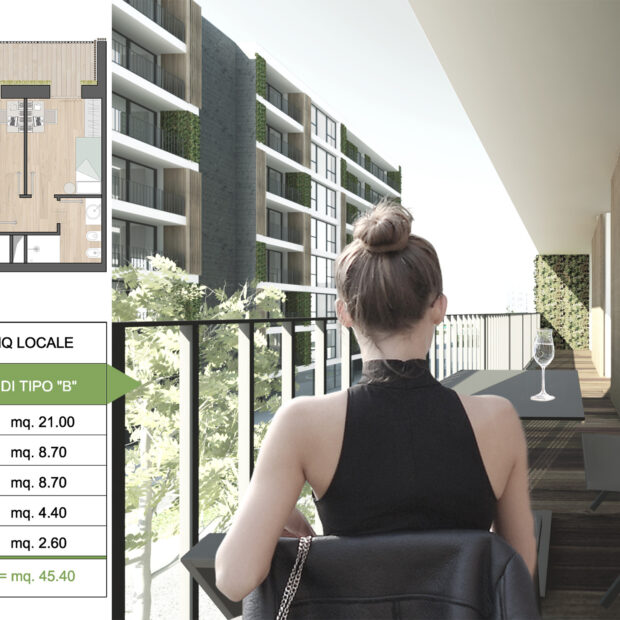Via Scarpa + Milano
Project in implementation of the Convention to be carried out in two phases:
– With the first phase, a building renovation project was drawn up with a change of intended use on the ground floor and recovery of the attic without an increase the s.l.p. of the existing building (building block “A”);
The existing building has a rectangular plan with a “pavilion” roof.
The slopes are supported by wooden beams with Marseilles tiles resting directly on strips. The windows and shutters are made of wood but do not have chromatic homogeneity. The facades are in a mediocre state of superficial conservation. The internal one also has an unsightly iron canopy covered with sandwich panels.
The project includes:
> The demolition of the canopy on the courtyard side and the formation, in its place, of a portico supported by eleven reinforced concrete pillars combined two by two
> The replacement of all windows and shutters.
> The redistribution of interior spaces.
> The Formation of a new attic volume.
The attic lies on the pre-existence, also resuming the scanning of the full and empty floors of the floor below, both on the Via Scarpa side and on the courtyard side, so as not to alter the perspective harmony of the existing building.
– With the second phase, we proceed with the expansion with a new building (building block “B”);
The building object of intervention or Factory Body “B” built in adherence to the pre-existing building defined as Factory Body “A” is spread over three levels. The part facing the inner courtyard will be the fulcrum of family life, it is in fact more protected from the eyes of strangers and turns the large openings towards the green property; For this reason, the rooms that require more light such as the kitchen and the living room are located here. On the street side, where the services and bedrooms are housed, the openings are smaller and recall those of the pre-existing building in form and above all in the scanning between full and empty spaces.
Here and on the side elevation there is a vertical greening system of the façade which from an architectural point of view helps to better integrate the new building within the garden.
The choices made from the point of view of facade cladding have a twofold objective. In the first place, guarantee the efficiency and sustainability of the cladding elements. Secondly, differentiate the character of the two buildings (the new and the pre-existing).
The design of a green façade introduces aesthetic and environmental advantages in the context in which it is inserted, but the most important advantages are those inherent in the ecological aspect. Green facades, in fact, act on the microclimate and influence the physical-technical behavior of a building. In addition, when the green wall is a few centimeters away from the building, as in our case, an air gap is formed that offers the advantages of a ventilated wall, increasing thermal resistance. In summer it regulates the rise of the surface temperature and in winter its lowering.
PROJECT DATA
| CLIENT: | Private |
| TYPOLOGY: | residential |
| STATUS: | In progress |
| PLACE: | Milano |
| SUP: | — Mq |
| VOL: | — Mc |
| APPART. NUMB.: | 4 |
| PARKING PLACES: | – |
